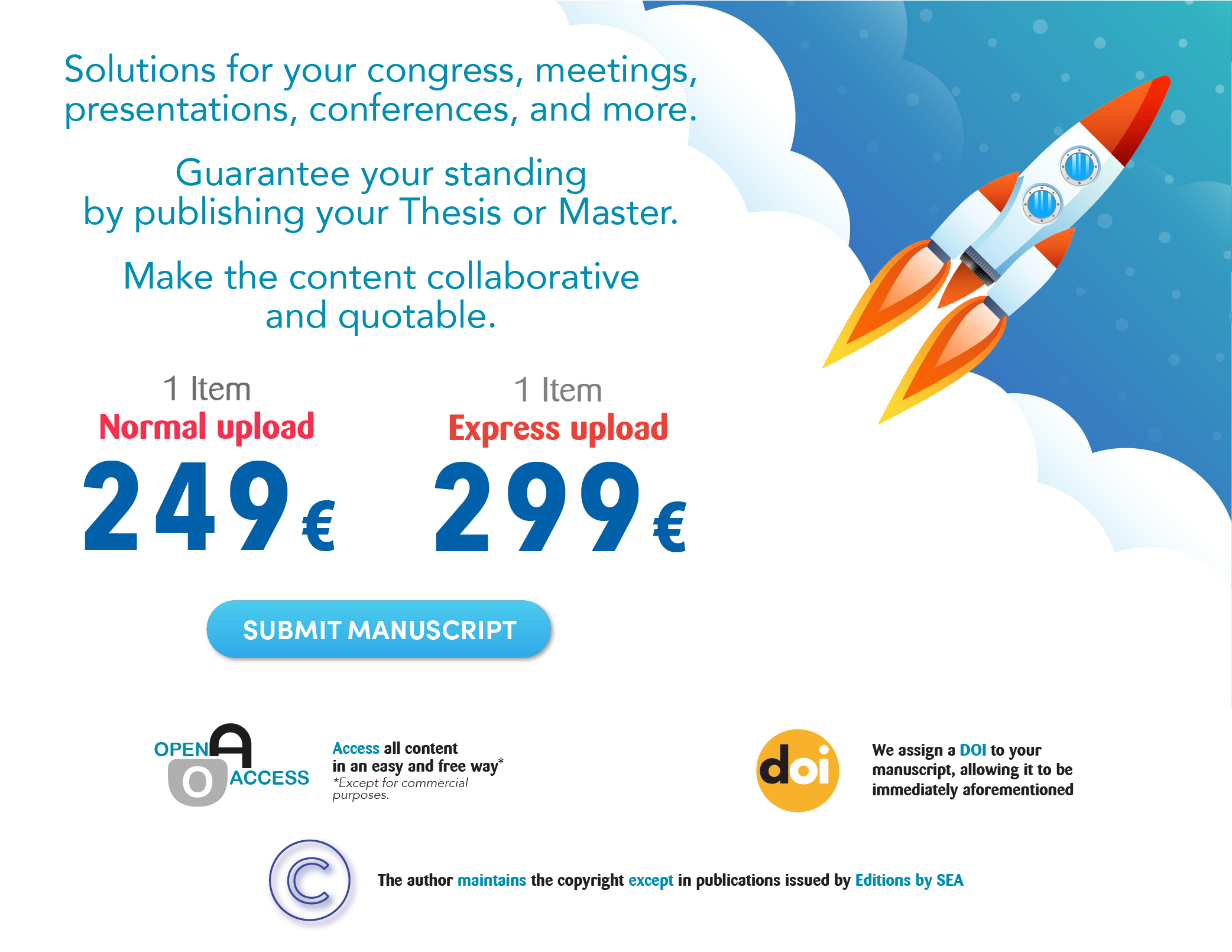A Decade of Research on Ultrasound in Carpal Tunnel Syndrome
Una década de investigación sobre ecografía en el Síndrome del Túnel Carpiano
Authors: Miguel Malo-Urriés
Coauthors: Izarbe Ríos-Asín, Sergio Borrella-Andrés, Gianluca Ciuffreda, Carles López-de-Celis, Elena Estébanez-de-Miguel, Pablo Fanlo-Mazas, Elena Bueno-Gracia, Mario Morales-Hernández
Keywords: Ultrasonography. Median Nerve. Carpal Tunnel Syndrome. Validity. Diagnosis
Keywords: Ultrasonografía. Nervio mediano. Síndrome del túnel carpiano. Validez. Diagnóstico
Abstract: Carpal tunnel syndrome (CTS) is a compressive neuropathy of the median nerve with significant prevalence in the general population. Over the past decade, our team has extensively investigated the use of ultrasound for evaluating and diagnosing CTS, focusing on the morphology of the carpal tunnel and the median nerve. This work includes stud-ies on the manual mobilization of carpal bones, the reliability of ultrasound measurements, and the diagnostic validi-ty of ultrasound compared with neurodynamic and electrophysiological methods. Currently, we are developing quantitative ultrasound analysis tools to improve the diagnostic accuracy of ultrasound in CTS.
Abstract : El síndrome del túnel carpiano (STC) es una neuropatía compresiva del nervio mediano con una prevalencia significa-tiva en la población general. Durante la última década, nuestro equipo ha investigado extensivamente el uso de la ecografía para evaluar y diagnosticar el STC, abordando la morfología del túnel carpiano y del nervio mediano. Este trabajo incluye estudios sobre la movilización manual de los huesos carpianos, la fiabilidad de las mediciones eco-gráficas, y la validez diagnóstica de la ecografía comparada con métodos neurodinámicos y electrofisiológicos. Ac-tualmente, estamos desarrollando herramientas de análisis ecográfico cuantitativo para mejorar la precisión diag-nóstica de la ecografía en el STC.
08-12-2024
Miguel Malo-Urriés
0 Comments
| Citation: Miguel Malo-Urriés, Izarbe Ríos-Asín, Sergio Borrella-Andrés, Gianluca Ciuffreda, Carles López-de-Celis, Elena Estébanez-de-Miguel, Pablo Fanlo-Mazas, Elena Bueno-Gracia, Mario Morales-Hernández. Una década de investigación sobre ecografía en el Síndrome del Túnel Carpiano. https://doi.org/10.24175/sbd.2024.000092 |
| Received: December 08, 2024 Accepted: December 08, 2024 Published: December 08, 2024 |
| Copyright: © 2024 Malo-Urriés et al. This is an open access article distributed under the terms of the Creative Commons Attribution License (CC BY-NC), which allows, distribution, reproduction in any medium, provided the original author and source are credited and non-commercial use. |
| Funding: |
| Conflicts of Interest: |
Una década de investigación sobre ecografía en el Síndrome del Túnel Carpiano
Miguel Malo-Urriés1, Izarbe Ríos-Asín1, Sergio Borrella-Andrés2, Gianluca Ciuffreda1, Carlos López-de-Celis3, Elena Estébanez-de-Miguel1, Pablo Fanlo-Mazas1, Elena Bueno-Gracia1, Mario Morales-Hernández4.
1Facultad de Ciencias de la Salud. Universidad de Zaragoza. Zaragoza. España, 3Universitat Internacional de Catalunya. Barcelona. España, 4Escuela de Ingeniería y Arquitectura. Universidad de Zaragoza. Zaragoza. España
Autor para correspondencia
Miguel Malo-Urriés, malom@unizar.es,
Palabras clave: Ultrasonografía, Nervio mediano, Síndrome del túnel carpiano, Validez, Diagnóstico
Introducción
El síndrome del túnel carpiano (STC) es una neuropatía compresiva del nervio mediano con una prevalencia significativa en la población general. Durante la última década, nuestro equipo ha investigado extensivamente el uso de la ecografía para evaluar y diagnosticar el STC, abordando la morfología del túnel carpiano y del nervio mediano. Este trabajo incluye estudios sobre la movilización manual de los huesos carpianos, la fiabilidad de las mediciones ecográficas, y la validez diagnóstica de la ecografía comparada con métodos neurodinámicos y electrofisiológicos. Actualmente, estamos desarrollando herramientas de análisis ecográfico cuantitativo para mejorar la precisión diagnóstica de la ecografía en el STC.
Objetivo
Validar el uso de una nueva herramienta de análisis ecográfico desarrollada, UZ qTool, para la cuantificación del nervio mediano en pacientes con STC, facilitando la detección precoz y seguimiento de esta patología en la práctica clínica.
Metodología
Se ha realizado un estudio observacional y analítico con 40 pacientes con sospecha diagnóstica de STC. La ecografía del nervio mediano se ha llevado a cabo utilizando UZ qTool, que permite un análisis cuantitativo preciso de las imágenes. Se recogieron datos sobre los cambios dimensionales del túnel carpiano y del nervio mediano. Las medidas obtenidas shan sido comapradas con los resultados de pruebas electrofisiológicas para establecer la validez y fiabilidad de la nueva herramienta.
Resultados
La herramienta UZ qTool ha mostrado una elevada fiabilidad y validez diagnóstica para el STC. Además de presentar los datos de fiabilidad y validez de la nueva herramienta, se repasará una década de investigación en este campo con trabajos como: "Dimensional Changes of the Carpal Tunnel and Median Nerve During Manual Mobilization", "Reliability of Measurement of the Carpal Tunnel and Median Nerve in Asymptomatic Subjects", "Diagnostic Validity of Ultrasonography in Carpal Tunnel Syndrome" "Validity of the Upper Limb Neurodynamic Test 1 for the Diagnosis of Carpal Tunnel Syndrome".
Conclusiones
La ecografía es una herramienta ideal para la evaluación del STC debido a su accesibilidad, bajo coste y capacidad para visualizar cambios morfológicos en el nervio mediano. La implementación de UZ qTool permite superar la subjetividad en la interpretación de las imágenes, proporcionando una cuantificación objetiva y precisa. Esta herramienta puede revolucionar la práctica clínica, facilitando la detección precoz y el seguimiento del STC, y mejorando así la gestión de los pacientes.
A Decade of Research on Ultrasound in Carpal Tunnel Syndrome
Miguel Malo-Urriés1, Izarbe Ríos-Asín1, Sergio Borrella-Andrés2, Gianluca Ciuffreda1, Carlos López-de-Celis3, Elena Estébanez-de-Miguel1, Pablo Fanlo-Mazas1, Elena Bueno-Gracia1, Mario Morales-Hernández4.
1Faculty of Health Sciences. University of Zaragoza. Zaragoza. Spain, 3International University of Catalonia. Barcelona, Spain, 4School of Engineering and Architecture. University of Zaragoza. Zaragoza. Spain
Corresponding author
Miguel Malo-Urriés, malom@unizar.es,
Keywords: Ultrasonography, Median Nerve, Carpal Tunnel Syndrome, Validity, Diagnosis
Introduction
Carpal tunnel syndrome (CTS) is a compressive neuropathy of the median nerve with significant prevalence in the general population. Over the past decade, our team has extensively investigated the use of ultrasound for evaluating and diagnosing CTS, focusing on the morphology of the carpal tunnel and the median nerve. This work includes studies on the manual mobilization of carpal bones, the reliability of ultrasound measurements, and the diagnostic validity of ultrasound compared with neurodynamic and electrophysiological methods. Currently, we are developing quantitative ultrasound analysis tools to improve the diagnostic accuracy of ultrasound in CTS.
Objective
To validate the use of a newly developed ultrasound analysis tool, UZ qTool, for quantifying the median nerve in CTS patients, thereby facilitating early detection and monitoring of this condition in clinical practice.
Methodology
An observational and analytical study was conducted with 40 patients with suspected CTS. The ultrasound of the median nerve was performed using UZ qTool, enabling precise quantitative image analysis. Data were collected on dimensional changes of the carpal tunnel and the median nerve. The measurements obtained were compared with the results of electrophysiological tests to establish the validity and reliability of the new tool.
Results
UZ qTool demonstrated high reliability and diagnostic validity for CTS. In addition to presenting reliability and validity data for the new tool, this research also reviews a decade of studies in this field, including works such as "Dimensional Changes of the Carpal Tunnel and Median Nerve During Manual Mobilization," "Reliability of Measurement of the Carpal Tunnel and Median Nerve in Asymptomatic Subjects," "Diagnostic Validity of Ultrasonography in Carpal Tunnel Syndrome," and "Validity of the Upper Limb Neurodynamic Test 1 for the Diagnosis of Carpal Tunnel Syndrome."
Conclusions
Ultrasound is an ideal tool for CTS evaluation due to its accessibility, low cost, and ability to visualize morphological changes in the median nerve. Implementing UZ qTool overcomes the subjectivity in image interpretation, providing objective and precise quantification. This tool has the potential to revolutionize clinical practice by facilitating early detection and monitoring of CTS, thus improving patient management.





